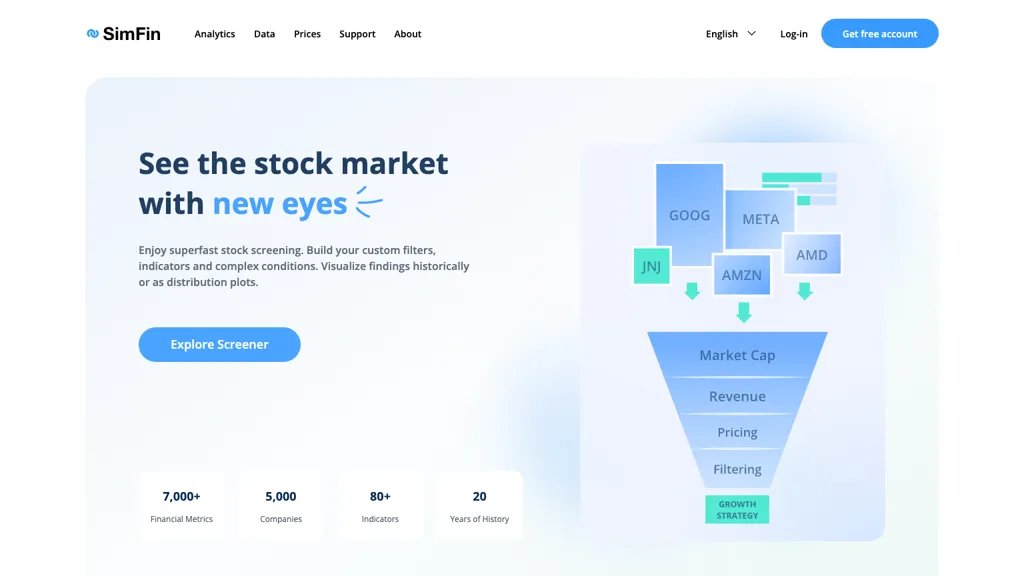20 Good Suggestions For Choosing AI Stock Picker Platform Websites
20 Good Suggestions For Choosing AI Stock Picker Platform Websites
Blog Article
Top 10 Suggestions For Considering Ai And Machine Learning Models On Ai Stock Trading Platforms
To ensure accuracy, reliability, and useful insights, it is crucial to examine the AI and machine-learning (ML) models utilized by prediction and trading platforms. Models that are overhyped or poorly constructed can lead flawed predictions, and even financial loss. Here are the 10 best tips for evaluating AI/ML models on these platforms.
1. Understanding the model's goal and approach
The objective clarified: Identify the objective of the model whether it's to trade on short notice, investing in the long term, sentimental analysis, or managing risk.
Algorithm transparency - Look for any information about the algorithms (e.g. decision trees or neural nets, reinforcement learning etc.).
Customizability: Determine whether the model is able to adapt to your particular strategy of trading or your tolerance to risk.
2. Assess the performance of your model using by analyzing the metrics
Accuracy: Verify the accuracy of the model when it comes to the prediction of the future. But, don't just use this measure since it can be misleading when used with financial markets.
Precision and recall (or accuracy): Determine how well your model can discern between real positives - e.g. accurate predictions of price fluctuations - and false positives.
Risk-adjusted gain: See whether the assumptions of the model can lead to profitable transactions, after taking into account risk.
3. Check the model with backtesting
Historic performance: Use historical data to backtest the model and determine what it would have done in the past under market conditions.
Testing with data that is not the sample: This is essential to avoid overfitting.
Scenario analyses: Check the model's performance under different market scenarios (e.g. bull markets, bear markets, high volatility).
4. Be sure to check for any overfitting
Signals that are overfitting: Search models that do extremely well in data training, but not so well on data that isn't seen.
Regularization methods: Ensure that the platform does not overfit by using regularization like L1/L2 or dropout.
Cross-validation. Make sure the platform is performing cross validation to test the model's generalizability.
5. Review Feature Engineering
Relevant features: Ensure that the model has meaningful attributes (e.g. price volumes, technical indicators and volume).
Feature selection: You should make sure that the platform selects features with statistical significance and avoid redundant or unneeded information.
Updates to features that are dynamic: Check to see how the model adapts itself to the latest features or to changes in the market.
6. Evaluate Model Explainability
Interpretation: Make sure the model provides clear explanations for its predictions (e.g., SHAP values, importance of features).
Black-box Models: Be cautious when platforms employ complex models with no explanation tools (e.g. Deep Neural Networks).
User-friendly insight: Determine if the platform can provide relevant information for traders in a way that they are able to comprehend.
7. Assessing the Model Adaptability
Market changes - Verify that the model is adapted to changes in market conditions.
Check for continuous learning. The platform should be updated the model frequently with new information.
Feedback loops: Ensure that the platform incorporates user feedback or real-world results to help refine the model.
8. Examine for Bias, Fairness and Unfairness
Data bias: Ensure that the data on training are representative of the market, and that they are not biased (e.g. overrepresentation in certain segments or time frames).
Model bias: Make sure that the platform monitors the model biases and mitigates it.
Fairness: Make sure whether the model favors or disfavor specific stocks, trading styles or particular sectors.
9. Evaluation of the computational efficiency of computation
Speed: Check the speed of your model. to produce predictions in real-time or with minimum delay especially for high-frequency trading.
Scalability - Make sure that the platform is able to handle massive datasets, multiple users, and does not affect performance.
Resource usage: Determine whether the model is using computational resources effectively.
Review Transparency and Accountability
Documentation of the model: Ensure that the platform has comprehensive documentation about the model's structure and training process.
Third-party Audits: Determine if the model has independently been audited or validated by third organizations.
Check if there are mechanisms that can detect mistakes or failures in models.
Bonus Tips
Case studies and user reviews: Study user feedback to get a better idea of the performance of the model in real-world situations.
Trial period for free: Test the accuracy of the model and its predictability with a demo, or a no-cost trial.
Support for customers - Make sure that the platform you choose to use is able to offer a solid support service to help you resolve the model or technical problems.
By following these tips you can assess the AI/ML models used by stock prediction platforms and make sure that they are accurate as well as transparent and linked to your trading goals. Check out the most popular inciteai.com AI stock app for more tips including best ai for trading, ai stock trading app, investing ai, ai trading tools, trading ai, best ai stock trading bot free, ai investment platform, ai for investing, ai trade, incite and more.
Top 10 Strategies To Maintain And Update Ai Trading Platforms
The regular updates and maintenance of AI stock prediction and trading platforms are critical for ensuring they remain safe, efficient and in sync with the evolving market conditions. Here are 10 tips on how you can evaluate their update and maintenance practices:
1. Updates will be posted frequently.
Tip: Determine the frequency of updates to your platform (e.g. monthly, quarterly weekly, quarterly).
Regular updates show the ongoing development of the product and an ability to react to market developments.
2. Transparency and Release Notes
Read the notes on the platform's release to see what changes or improvements are taking place.
Transparent release notes show that the platform is dedicated to ongoing improvement.
3. AI Model Retraining Schedule
Tip Ask what frequency AI is retrained by new data.
The reason is that markets change, and models must be updated to ensure accuracy.
4. Bug Solutions and Issue Resolution
Tip: Check how quickly the platform fixes bugs or other technical issues.
Why: Prompt fix for bugs ensure that the platform's reliability and operational.
5. Updates to Security
Tips Verify that the security protocols on your platform are updated regularly to safeguard users' data and trades.
Why? Cybersecurity is important on financial platforms to protect against fraud.
6. Integration of New Features
Tips: Check whether there are any new features added by the platform (e.g. advanced analytics and data sources.) in response to user feedback or market trends.
Why: Feature updates demonstrate innovation and responsiveness to the needs of users.
7. Backward Compatibility
Tip : Make sure updates don't interfere with existing functionality or require major configuration.
Why? Backward compatibility is important to ensure smooth user interface transitions.
8. Communication between Users and Maintenance Workers
You can evaluate the communication of maintenance schedules or downtimes to users.
Why: Clare communication minimises disruptions and builds trust.
9. Performance Monitoring and Optimisation
TIP: Ensure your platform is monitoring and optimizing performance metrics of the system (e.g. accuracy, latency).
Why? Ongoing optimization will make sure that the platform remains effective.
10. Conformity with Regulation Changes
Verify that the features and policies of the platform have been updated to conform with the new financial regulations or the laws on data privacy.
What's the reason? Compliance with regulatory requirements is essential to ensure user confidence and reduce legal risk.
Bonus Tip User Feedback is incorporated into the program.
Verify that maintenance and updates are based on user feedback. This indicates a focus on the customer to improve.
When you look at all these aspects, it's possible to ensure that the AI stock trading platform you choose to use has been properly maintained. It should also be up-to-date and adaptable to market changes. View the top ai options tips for blog advice including best ai stock prediction, how to use ai for stock trading, ai for trading stocks, investing with ai, ai stock price prediction, best stock prediction website, ai tools for trading, ai stock analysis, chart ai trading, best ai stock prediction and more.